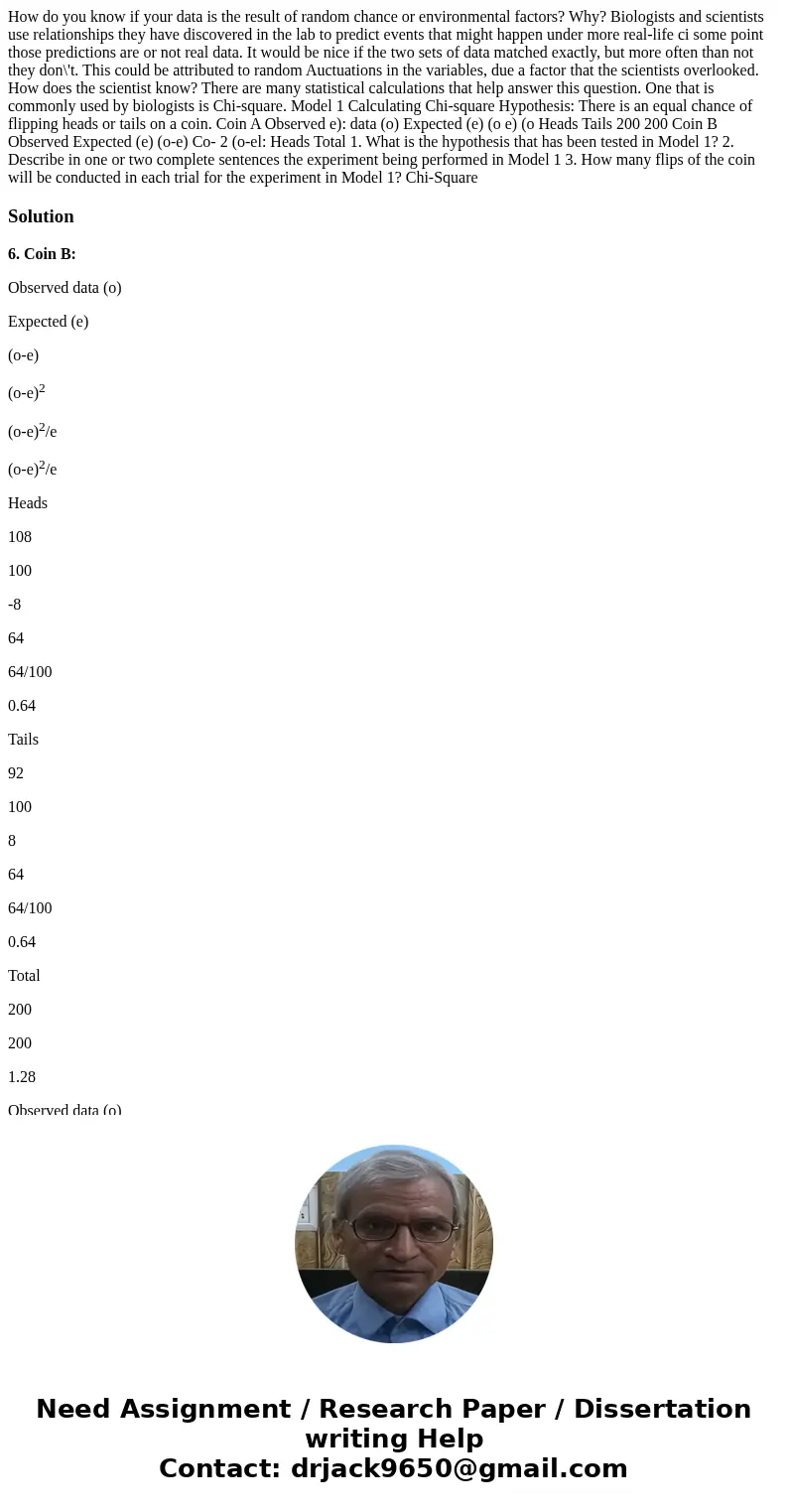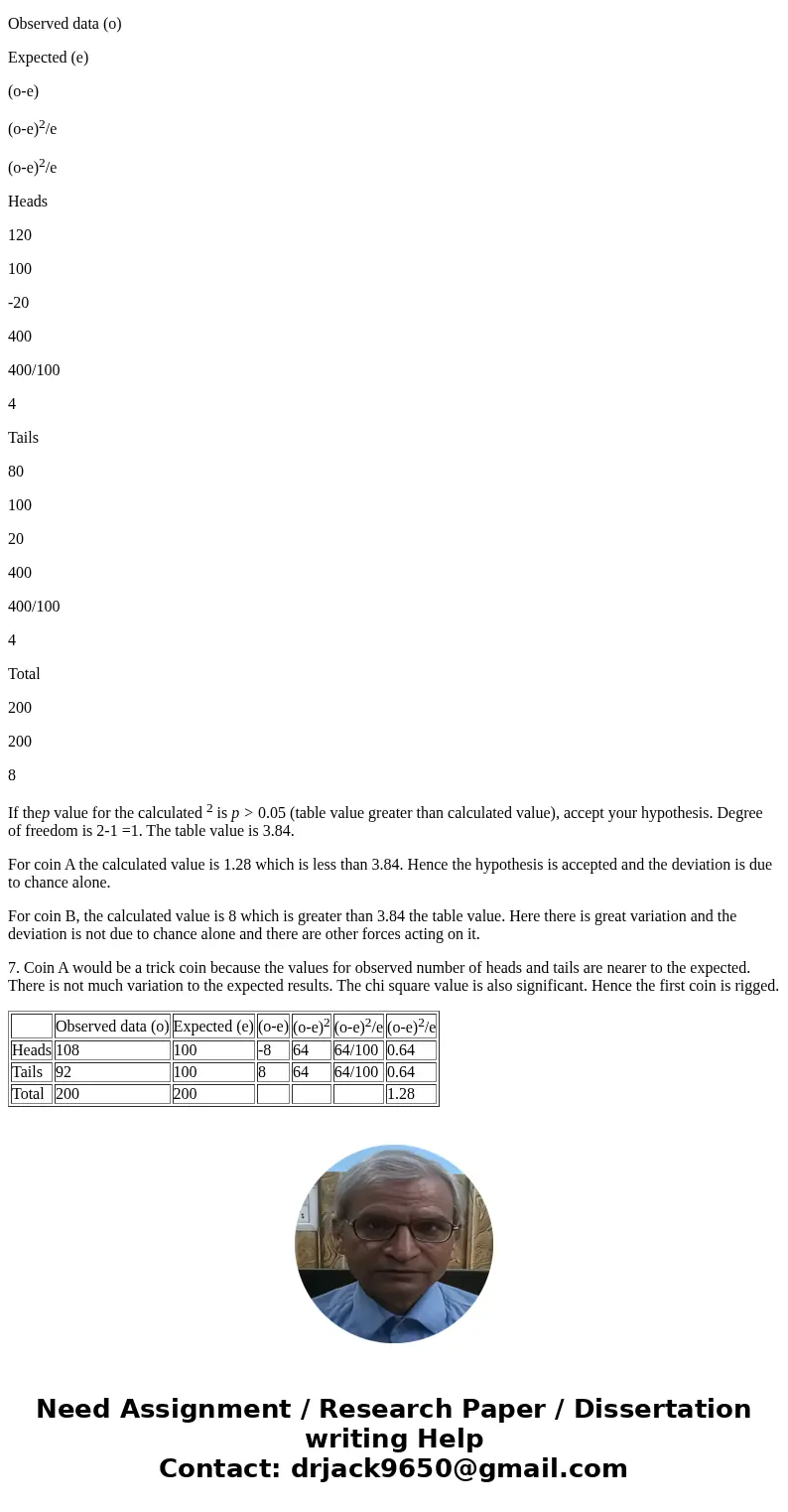How do you know if your data is the result of random chance
Solution
6. Coin B:
Observed data (o)
Expected (e)
(o-e)
(o-e)2
(o-e)2/e
(o-e)2/e
Heads
108
100
-8
64
64/100
0.64
Tails
92
100
8
64
64/100
0.64
Total
200
200
1.28
Observed data (o)
Expected (e)
(o-e)
(o-e)2/e
(o-e)2/e
Heads
120
100
-20
400
400/100
4
Tails
80
100
20
400
400/100
4
Total
200
200
8
If thep value for the calculated 2 is p > 0.05 (table value greater than calculated value), accept your hypothesis. Degree of freedom is 2-1 =1. The table value is 3.84.
For coin A the calculated value is 1.28 which is less than 3.84. Hence the hypothesis is accepted and the deviation is due to chance alone.
For coin B, the calculated value is 8 which is greater than 3.84 the table value. Here there is great variation and the deviation is not due to chance alone and there are other forces acting on it.
7. Coin A would be a trick coin because the values for observed number of heads and tails are nearer to the expected. There is not much variation to the expected results. The chi square value is also significant. Hence the first coin is rigged.
| Observed data (o) | Expected (e) | (o-e) | (o-e)2 | (o-e)2/e | (o-e)2/e | |
| Heads | 108 | 100 | -8 | 64 | 64/100 | 0.64 |
| Tails | 92 | 100 | 8 | 64 | 64/100 | 0.64 |
| Total | 200 | 200 | 1.28 |


 Homework Sourse
Homework Sourse